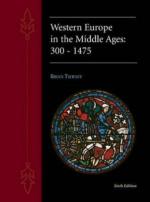|
This section contains 2,379 words (approx. 8 pages at 300 words per page) |

|
An Age of Surplus.
Until the eleventh century (and so, throughout the early medieval period), the visual arts in western Europe were an index of a young civilization's efforts to recapture a former grandeur and to express the ideals of the developing culture of Latin Christendom. Beginning around the end of the first Christian millennium (and certainly by the mid-eleventh century), European culture and the visual arts reached a new plateau and entered into a wonderfully rich and fertile period that we have come to call "Romanesque." The historical factors underlying this cultural development are well known. Improved agricultural technology helped to bring about an historic expansion of the European economy and society in the eleventh century. Old centers of production were revitalized, interregional trade increased (as did the use and circulation of gold and silver coinage), and populations grew...
|
This section contains 2,379 words (approx. 8 pages at 300 words per page) |

|




